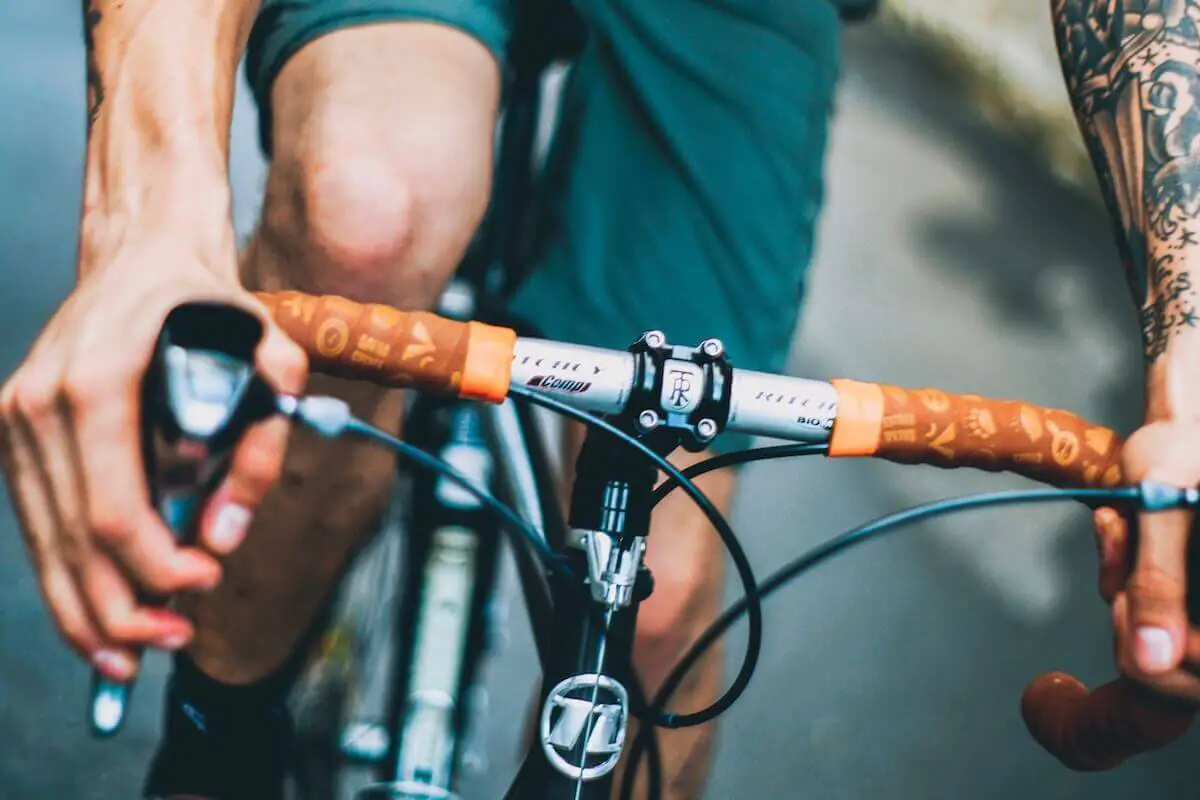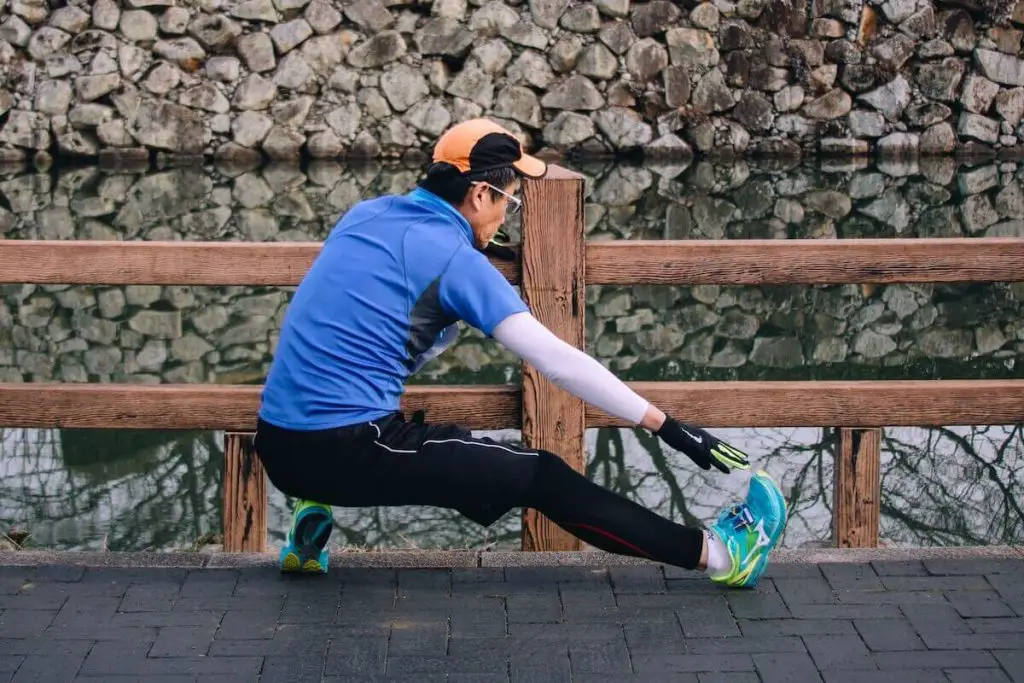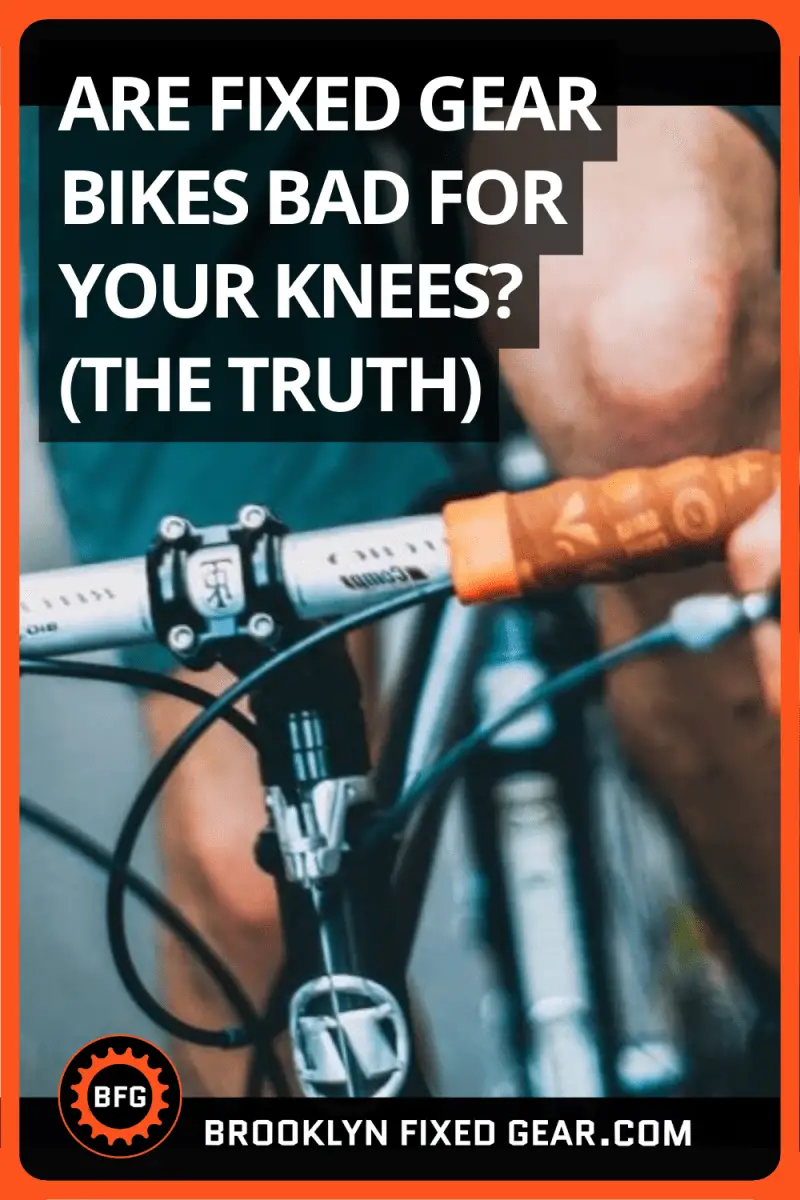If you’ve been riding fixed gear for any amount of time, you’ve probably heard someone say something like, “You ride a fixed gear? I heard those are bad for your knees.” I often shrug these questions off. But I have recently found myself wondering that very same question.
I’ve been riding fixed for years and have experienced no detriment to my knees or any other part of my body. In fact, I have experienced the opposite. I’ve never felt better. But how does riding fixed affect other cyclists? So I did some digging around to answer the question, are fixed gear bikes bad for your knees? So, in this article, you will learn if riding fixed is bad for your knees and how to prevent knee problems down the line, so you can stay fixed for longer.
Are fixed gear bikes bad for your knees? Fixed gear cycling requires constant pedaling, which may accelerate joint wear. However, all physical activity contributes to joint wear, and riding a fixed-gear bike casually with proper technique should not do too much harm to your knees in the long run. Skid stopping, however, can do long-term damage. To prevent long-term issues, use a front brake with your fixie.
What is a fixed-gear bike?
Fixed gear bikes, or “fixies,” are bicycles that have a single direct rear-wheel-drive mechanism. The gear mechanism does not allow the rear wheel to operate freely or “coast,” like most other bikes. They are descendants of racing track bikes.

The terms “fixed-gear” or “fixie” are often used interchangeably with single-speed bikes, but they are not the same. For example, single-speed bikes allow you to coast; fixies have no such feature.
State Bicycle Co. Black Label 6061

State Bicycle Co. Black Label 6061
Are there health benefits to riding a fixed-gear bike?
Since you’re constantly pedaling the bike, you are burning a lot more calories than you would on other bikes. The constant pedaling makes fixed-gear bikes excellent for losing weight or getting in shape. It also trains the rider to pedal consistently and budget their energy for the ride.
Another benefit of riding fixed is better balance. With a fixed-gear bike, you can balance yourself while not in motion using the pedals. This is called a track stand. After practicing this at every red light, you will find that your overall balance will have improved dramatically.
If you want to learn more about fixies and the strong culture behind them, check out our complete guide on fixed gear bikes. If you’re looking for a new fixie, check out our post on the best-fixed gear and single-speed bikes, or check out some of the options below.
[azonpress template=”grid” asin=”B01B5H1A96,B096ZLDH9B,B07VVGW8JD”]
Do fixie bikes hurt your knees?
Fixed gear cycling necessitates continuous pedaling, which can hasten joint wear. However, all physical activity contributes to joint wear, and casually riding a fixed-gear bike with proper technique should not cause too much damage to your knees in the long run. Skid stopping, on the other hand, can be harmful in the long run. Use a front brake on your fixie to avoid long-term problems.
Why do people say fixies are bad for your knees?
Every physical activity poses some risk of injury, especially to the knee. Knee wear is common in jogging or playing basketball. But why might riding fixed be bad for your knees?
For a fixed-gear bike to stay in motion, the rider must pedal consistently. There is no “coasting” with a fixie. This means your legs will continue pedaling along with the muscles and tendons around the knee joint. Constant pedaling can result in the overuse of the muscles that stabilize the knee joint. The muscle group that supports the knee joints can become uneven when overworked, which can lead to chondromalacia patella (the medical term for knee pain).
Additionally, a “real” fixed gear bike has no brakes, so more leg work is required to stop. Too much skid stopping can also be detrimental to your knees.
With all this said, it’s not difficult to see why people say riding fixed is bad for your knees.
Why do my knees ache after biking?
Most cycling knee discomfort is caused by a condition known as patellofemoral pain syndrome. This condition is commonly caused by athletic overuse or high-impact knee use (among bikers, overuse is the more common culprit.)
Tips to prevent knee pain
Below are some valuable tips to prevent long-term knee pain.
1. Choose a reasonable gear ratio
A heavy gear ratio can also be detrimental. If you experience knee pain or have difficulty ascending hills, consider upgrading to a larger rear sprocket to take the pressure off. If you don’t know your gearing ratio, check out our guide on choosing the correct gear ratio.
2. Take it easy when going up and downhill.
If there are hills in your ride location, plan to take it easy, going up and in full control coming down. If you feel pain when riding, stop pedaling, and walk your bike up or down the hill.
If you feel more pain than usual, give it a rest. Plan your rides in the range of your limits and increase speed and ride duration slowly over time.
I would also advise you to pay attention when going downhill because if you are riding fixed, your knees will also be doing a lot of work when going downhill.
3. Stretch before every bike ride
To prevent any injury during a ride, do some warm-ups and stretches as you would before any heavy exercise routine. Stretch your back, shoulder, and leg muscles to avoid cramping or soreness. Many stretches are explicitly made for cycling. Consider using a muscle stretch roller to help you stretch.

4. Employ the proper fixed gear riding technique.
As a rider learns how to use and control a fixie, they must learn proper cycling form. The appropriate riding form ensures all your muscle groups function in a way that minimizes stress on the knee joint.
Proper cycling starts with getting a bike that fits your height and body type. The position of the seat, the fit of the toe clips, handlebars, and overall bike fit should not be overlooked. Practicing proper cycling form also means using your back, legs, and arms to achieve good balance and stable support for your knee joints.
For those with knee pain, it is best to have your seat a bit higher than you usually would. This reduces the maximum knee flex, which can help ease the pain.
5. Use efficient pedal strokes to prevent knee injury
The most efficient pedaling method is pedaling in a circle. Put light foot pressure around the circumference of the stroke. Use the ball of your foot to push on the downstroke, and then use your foot inside the toe-clip to scoop the pedal back upward. Use your thighs to do most of the work and relieve pressure from your knees.
6. Stay in shape
It is essential for fixie riders to be in good physical shape and properly use all muscle groups to avoid unnecessary overuse of the knee joints when pedaling. The hamstring and glute muscles are important muscle groups to ensure efficient pedal motion.
Serious fixed gear riders should include regular leg muscle strength training as part of their regular workout and cycling routine. The muscles that support the knee joint and other muscle groups used in cycling should be in the best shape possible.
There is less risk of injury if your muscles are in good shape. If you’ve been a “couch potato” for a few months, jumping on your fixie for a long ride is not a good idea.
7. Pay attention to the weather
Weather conditions can alter your riding form and the traffic around you. Try not to ride in the rain or heavy winds. Always adjust your riding form to maintain control and stability. Fixed gears fare better in rain and snow than their freewheeled counterparts.
If you’re looking for even more information on the effects of fixed cycling and knee pain, take a look at this video called “Is fixed gear bad for your knees?” from the Zach Gallardo YouTube Channel.
Frequently Asked Questions (FAQs)
Still have questions? Below are some of the most commonly asked questions about preventing knee pain after biking.
How can I avoid knee pain when riding a fixed-gear bike?
When riding a fixed-gear bike, minimizing knee pain is vital. One way to do this is by adjusting your saddle height accordingly. Additionally, you should stretch regularly before and after rides to avoid aggravating injuries. And lastly, be sure to ride slowly at first so that you can get used to the weight of the bike and make gradual changes as needed.
What can I do to treat and ease knee pain from biking?
If you’re experiencing knee pain after biking, there may be several things that you can do to ease the pain.
First, make sure that your bike is set up correctly. Make sure it’s comfortable, and avoid using pedals higher than your heel while cycling.
Next, try incorporating light stretching before each ride, as this will help loosen muscle tension in the hips, hamstrings, quads, and calves. And finally, invest in a pair of cycling socks designed specifically for reducing knee pain – they’ll cushion those strained joints while also wicking away sweat so that it doesn’t accumulate on the skin around the knees. Also, consider using kinesiology tape.
Why do cyclists tape their knees?
Knee taping is a technique used to treat knee pain. It is also done to improve knee support, which may be used to treat and prevent a variety of injuries. This tape is called “kinesiology tape.” It supports muscles and connective tissues around an injury without hindering movement. The procedure entails wrapping special tape around the knee. The tape is put on in certain spots, and it is said that the way it controls muscles and joints can ease knee pain.
Should I wear knee pads while cycling?
Cycling knee pads may be a good idea if you are prone to accidents. Knee pads not only protect your knees from hitting the ground hard.
Conclusion
This article might have made riding fixed seem bad for your knees, but if you are in good shape and your bike is in good operational condition, you should have nothing to worry about.
Approach your ride on a fixed gear bike as you would with any sport that works your leg muscles and requires proper form. And for the record, I don’t feel any significant pain. In fact, I feel stronger, faster, fitter, and overall better than ever, and I have been riding fixed for years. Of course, everyone is different, but for me, nothing can take me away from riding fixed.
This article covered cycling and how it can relate to long-term knee damage. Here are some key takeaways:
Key takeaways
- Riding fixed has many health benefits.
- The constant churning of the pedals can be bad for your knees.
- Practice proper form and efficient pedaling to reduce risk.
- Stretch often and stay in shape to minimize risk.
- If you experience pain, stop riding.
Do you feel riding fixed is bad for your knees? Let us know in the comments below (we read and reply to every comment). Also, if you found this article helpful, check out our full blog for more tips and tricks on everything fixie. Thanks for reading, and stay fixed.
Helpful resources
- Knee Safety While Cycling – Cycle Consciously
- Fixed-gear bicycle – Wikipedia
- Articles about Fixed Gear and Singlespeed Cycling and Equipment

















Hello there, I just found your article very very useful, thanks for sharing
Hey Sergio. Thanks for the comment! It means a ton. I love to hear that we are helping people find useful information! All the best!
Hey Bradley, awesome article, thanks a lot!!
I’m going to get my first fixie and still thinking actually cause I already have problems with knee pain (overuse from different sports, especially unicycle trial).
Do you think that if go easy for the start (just home-job 14 km daily, little elevation) and when I follow your tips, I could make my knees a bit stronger due to this exercise or it would be only worst as I already feel pain (even when going long upstairs at the moment… :(
I would stay single speed for a while, try fixed (with both brakes!), and give that a shot. While fixed, don’t try to skid stop. it really hurts your knees. you WILL feel it immediately! Also, make sure you have pedal straps, they help spread the word from the downstroke on the left foot to the upstroke on the right. It makes a 25% difference. I highly advise it. Hope this helps.
Are you sure about pulling up on the pedal stroke?
There has been research showing that flats are just as efficient and that professional time trialists using clipless don’t exert any significant power on the upstroke. Some studies saw a decrease in efficiency when asking trained subjects to pull up. The theory is that muscles that extend the leg like quads are much more efficient than the ones that bend it.
Even though the studies involved geared bikes, the concept would be no different on a fixie save for stopping.
That’s a really good point. I don’t know the science behind it all, so that may very well be. Thanks for leaving a comment!